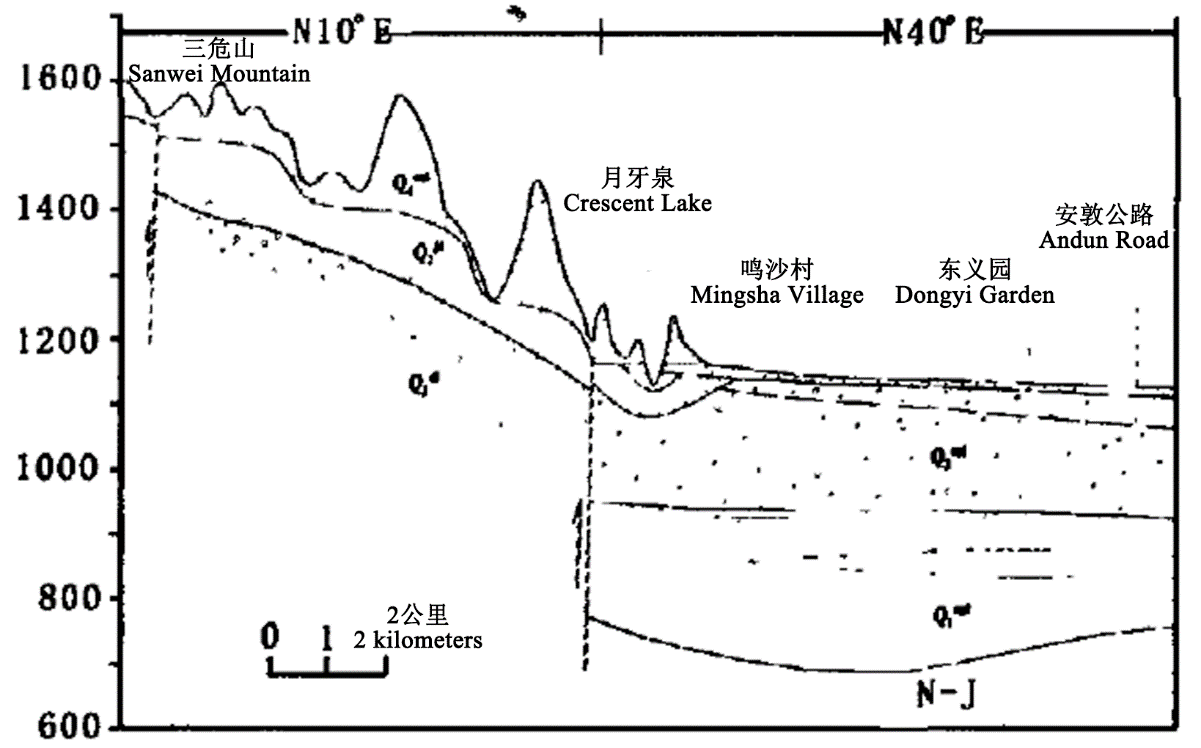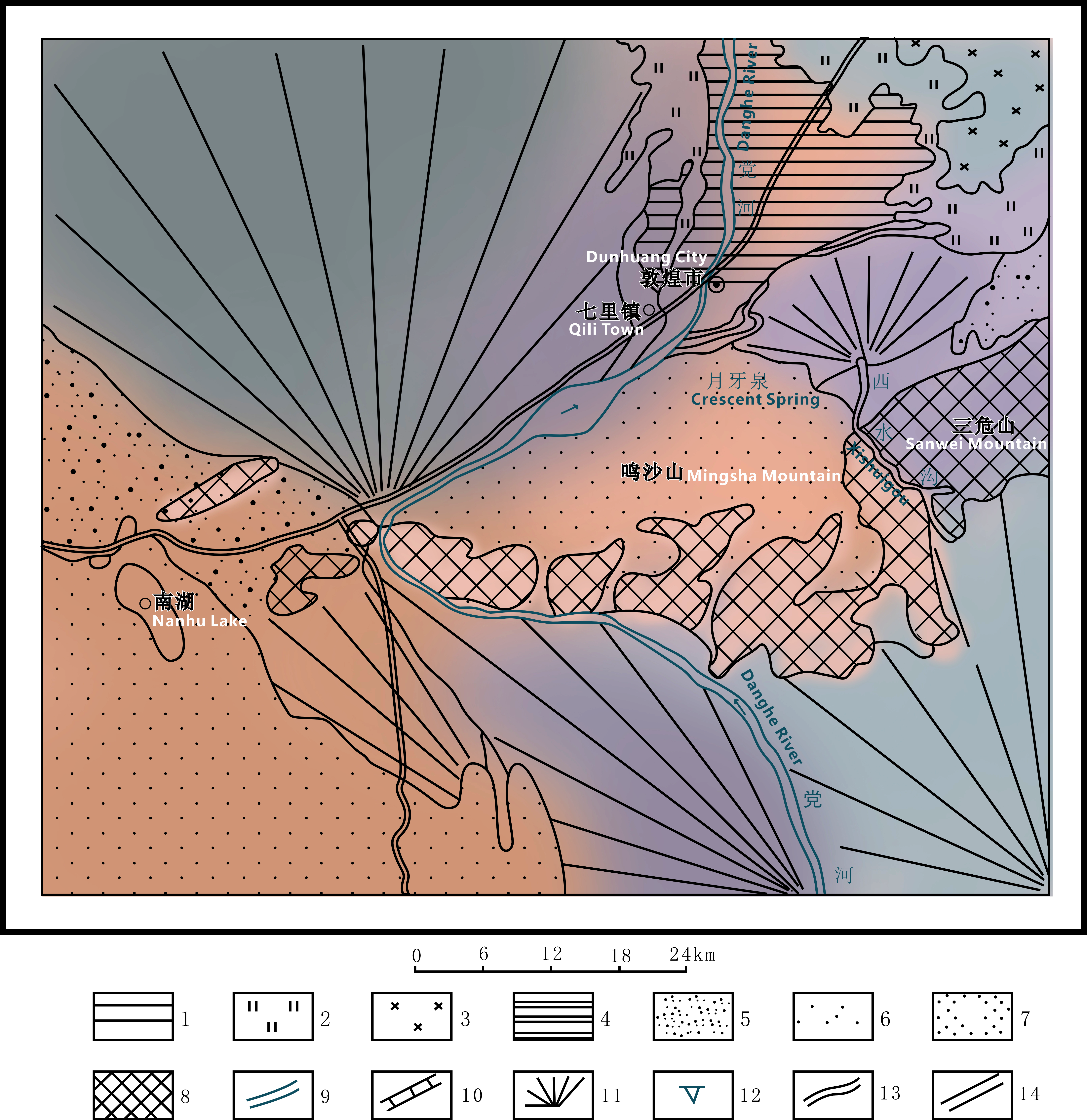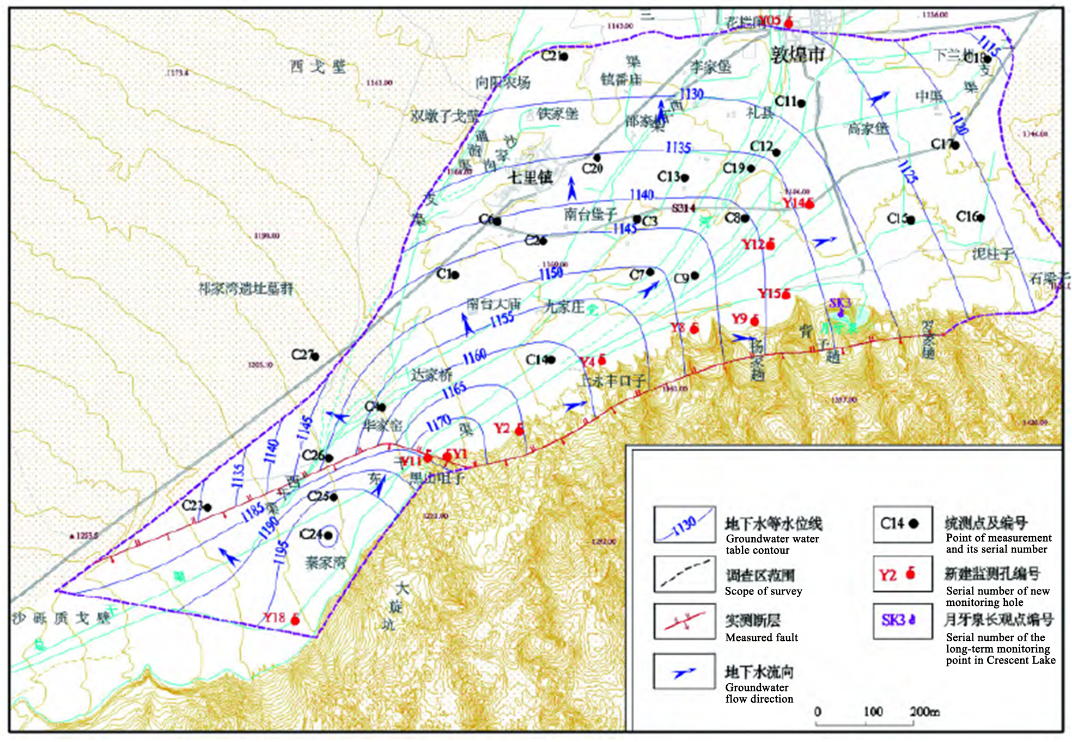After long-term research by geologists, it is found that the formation of the Crescent Spring mainly depends on three factors: the geological structure where the Crescent Spring is located, low-lying topographic conditions, and regional groundwater level characteristics.

Affected by geological processes, Danghe River and Xishuigou River constantly evolve, leading to the continuous accumulation of detritus materials in the southern mountainous area and formation of a thick layer of loose Quaternary detritus in the Crescent Spring area. This has provided favorable spatial conditions for the storage and transportation of groundwater in the Crescent Spring.

With the accumulation of sediments, two fan-shaped terrains were formed. The Crescent Spring is located in an inter-fan depression, which is a dead corner that sediments are difficult to enter. This makes the area relatively low-lying, providing necessary terrain conditions for the formation of the Crescent Spring.

The groundwater level in the Crescent Spring area is a key factor for its final formation. The groundwater around the Crescent Spring is part of the unified groundwater system with the Dunhuang Basin. The Spring is mainly supplied by the groundwater underflow of the right bank of the upstream Danghe River, and the variation in the spring area directly reflects changes in the groundwater level in surrounding areas during wet and dry seasons. Without water supplies, the Crescent Spring could not have formed. Therefore, to preserve the beauty of the Spring, it is essential to protect the ecological environment.
 简体中文
简体中文
